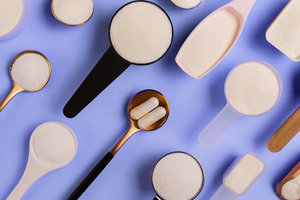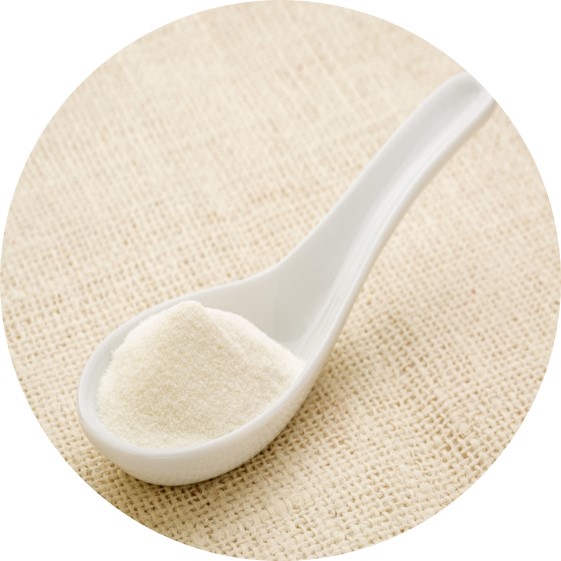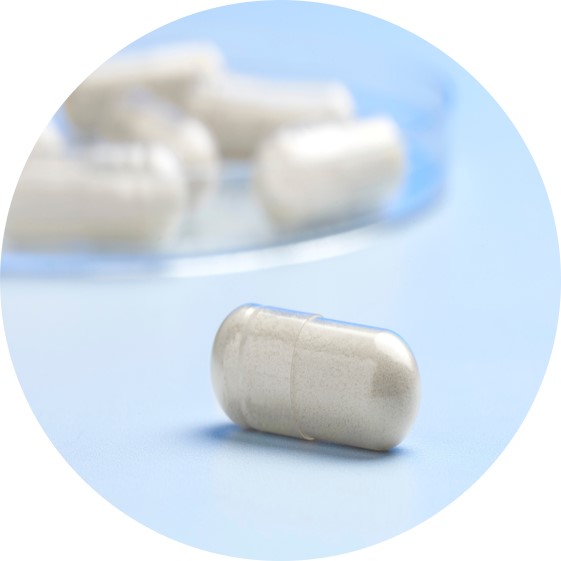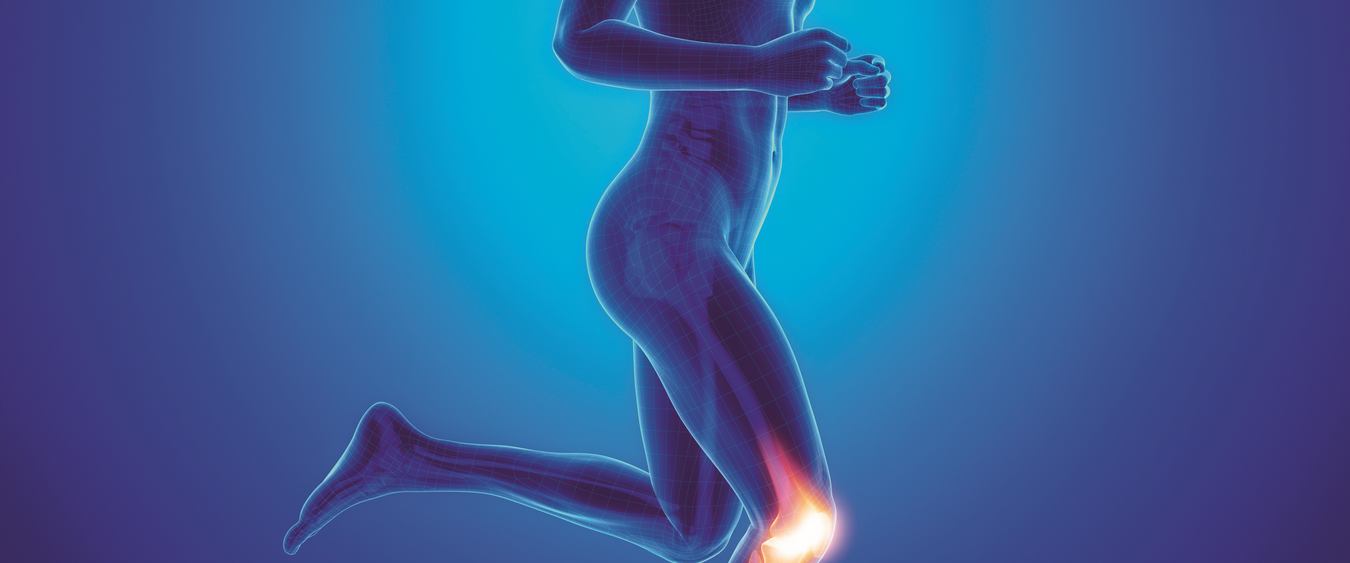What is type II collagen?

It's a fibrillar protein made up of 3 long chains of amino acids that form a tightly packed network of fibrils and fibers. It is the main component of cartilage in the body. It consists of dry weight and collagens. Type II collagen is what gives cartilage its tensile strength and elasticity, thereby enabling it to support the joints. It helps in the binding process with the help of fibronectin and other collagens.
What’s the difference between type II and type I collagen?
On the surface they appear to be the same, each being a triple helix i.e. made up of three long chains of amino acids. However, at a molecular level there is an important difference.
Type I collagen

Two of the three chains are identical
Type I Collagen is found mainly in bones and skin
If you want more information:
Type II collagen

All three chains are identical
Whereas type II collagen is only found in cartilage
What benefits does type II collagen play in the body?
As we’ve just seen, type II collagen is a major part of cartilage tissue. So to really understand the role it plays, one must look at the function of cartilage in the body.
Cartilage is a firm but pliable connective tissue. There are different types of cartilage in the body, each with a specific function. The cartilage found in joints has several functions, such as:

connecting bones

shock absorption

allowing tissue to bear mechanical stress

allowing connected bones to move without friction
Cartilage is made up of chondrocytes which are special cells that create what is known as an ‘extracellular matrix’ comprising proteoglycan, elastin fibers and type II collagen fibers which are the main collagenous substance found in cartilage. They play an extremely important role. They form a network of fibrils that help to bond proteoglycan and elastin fibers into a tough, but flexible tissue.
The main problem with cartilage is that it’s particularly prone to wear-and-tear. This is partly because it’s ‘avascular’, meaning it doesn’t have a blood supply for the direct delivery of nutrients.
Although the body is able to deliver some nutrients to the cartilage via a process known as ‘diffusion’( i.e. the nutrients diffuse through the surrounding connective tissue), this avascularity means that cartilage injuries heal slower because the body can’t deliver an adequate amount of the nutrients needed for the repair of chondrocyte cells.
In some cases, cartilage damage is considered irreversible due to the degradation of type II collagen.
So there is a growing number of people who are looking for natural ways to prolong the life of their cartilages, as well as improve their joint conditions.
What is hydrolyzed type II ?
Hydrolyzed type II collagen is simply native collagen that’s been broken down (via enzymatic hydrolysis) into peptides which are highly digestible and bioavailable proteins.
It's is produced from animal cartilage, a safe and natural source. Because it comes from cartilage, it naturally contains a matrix of type II collagen and glycosaminoglycans (GAGs).
Benefits of hydrolyzed type II collagen support joint health?

Many people around the world suffer with some kind of joint condition, the most common being Osteoarthritis (OA). Sufferers of joint conditions typically present with discomfort and reduced mobility in the affected joint(s).
The latest research shows that OA is driven by inflammation in the joint. This inflammation has a cascade effect which eventually leads to a breakdown of the cartilage matrix1,2,3.
Taking type II collagen peptides as a supplement can help people protect their joints by reducing the inflammation and, thereby extending the durability of their joints.
Efficacy backed by science:
A recent in vivo study demonstrated the efficacy of hydrolyzed type II collagen in relation to joint conditions. Type II collagen peptides were shown that at a low daily dosage of human equivalent to 1~3g/day to
- Stimulate proteoglycan synthesis in chondrocytes which in turn helps to promotes lubrication within the joint; and protects the cartilage from degradation.
- Reduce inflammation in the joints - evidenced by an observable and consistent reduction in the markers associated with inflammation;
- Act fast i.e. the benefits were realized in a matter of a few weeks.
When it comes to obesity-induced OA, the same study found that type II collagen supplementation significantly reduced synovial inflammation in the knee joint.
Type II collagen peptide supplementation in summary
Hydrolyzed type II collagen is widely recognised as being a key ingredient in leading-edge supplements for joint health.
- Because it is hydrolyzed it can be absorbed by the body
- It’s highly bioactive and bioavailable
- It can protect cartilages from degenerationfrom wear and tear
- Promotes cartilage lubrication
- Reduces inflammation in the synovial fluid
- Protection of bones at the joints
There’s a growing body of scientific evidence demonstrating type II collagen’s ability to help reduce discomfort and improve mobility for those people with joint conditions; it can also help protect the joints for those people who are conscious of joint health and wish to actively protect their joints.
For out more in depth information, check out this article: Peptan IIm, hydrolyzed collagen type II matrix backed by science
Peptan IIm has recently been rebranded to Colartix
ColartixTM, Flex in Motion.
Colartix is derived from cartilage, is made of naturally occurring collagen peptides and glycosaminoglycans (GAGs). It is backed by a consumer study with more than 200 participants.
References:
- Chevalier, X. et al., 2012, Nature Reviews
- Lieberthal, J. et al., 2015, Osteoarthritis and Cartilage, 23: 1825-1834
- Lange-Brokaar, B. et al., 2015, Arthritis & Rheumatology, 67(3): 733-740, Rheumatology 9(7): 400-410
- Soniwala, S. et al., 2018, Oral Hydrolyzed Type 2 Collagen Protects Against the OA of Obesity and Mitigates Obese Gut Microbiome Dysbiosis. Poster presentation at ORS 2018 and OARSI 2018
DISCLAIMER:
Rousselot makes no representation or warranty, whether expressed or implied, as to the accuracy, reliability, or completeness of the information, nor does it assume any legal liability, whether direct or indirect, for any information. Use of this information shall be at your discretion and risk. Nothing herein relieves you from carrying out your own suitability determinations and tests and from your obligation to comply with all applicable laws and regulations and to observe all third-party rights. This product is not intended to diagnose, treat, cure, or prevent any disease.

